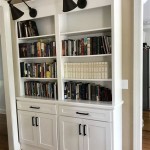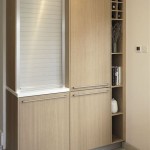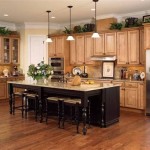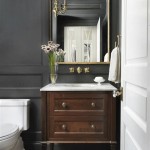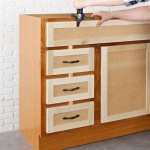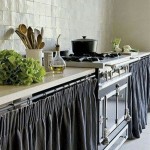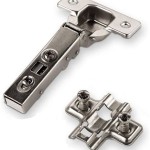Selecting the Ideal Paint Color for a Kitchen with Dark Cabinets
Dark kitchen cabinets, whether stained a rich mahogany, painted a deep navy, or finished with a sleek black lacquer, exude sophistication and elegance. However, their dominant presence requires careful consideration when selecting a complementary paint color for the surrounding walls. The right paint color can either enhance the richness of the dark cabinets or create a striking contrast, transforming the kitchen into a visually appealing and functional space. Choosing the wrong color, on the other hand, can lead to a gloomy or unbalanced aesthetic. This article explores several paint color options that harmonize well with dark kitchen cabinets, considering factors such as lighting, kitchen size, and desired ambiance.
The selection process should not be limited to personal preferences alone. Understanding the undertones present in the dark cabinets is crucial. Are they warm, with hints of brown or red, or cool, with hints of gray or blue? Identifying these undertones will guide the selection of a paint color that complements rather than clashes with the existing cabinetry. Furthermore, the existing hardware and countertop materials should also be factored into the decision-making process, ensuring a cohesive and unified design.
Understanding the Impact of Light and Space
Before delving into specific color recommendations, it’s essential to consider the impact of both natural and artificial light on the paint color. Dark cabinets inherently absorb light, making the kitchen appear smaller and potentially dimmer. Therefore, in kitchens with limited natural light, lighter paint colors are generally preferred. These colors reflect light, brightening the space and creating a more open and airy feel. Conversely, in kitchens with an abundance of natural light, bolder and more saturated paint colors can be utilized without overwhelming the space.
The size of the kitchen also plays a significant role. In smaller kitchens, lighter colors, as mentioned previously, are crucial to maximize the perception of space. Darker colors, while potentially dramatic, can make a small kitchen feel cramped and claustrophobic. In larger kitchens, the design possibilities expand, allowing for the incorporation of both lighter and darker paint colors, potentially creating accent walls or strategically highlighting specific architectural features.
Classic and Versatile Paint Color Options
Several paint colors consistently prove to be successful pairings with dark kitchen cabinets. These colors offer versatility and a timeless appeal, adapting to various kitchen styles and design preferences.
Off-White Hues: Off-white shades, such as cream, ivory, and warm whites, are a popular and safe choice. These colors provide a soft contrast to the dark cabinets, creating a clean and inviting atmosphere. Their inherent warmth balances the coolness often associated with darker tones, preventing the kitchen from feeling stark or sterile. Off-white colors also serve as a neutral backdrop, allowing the dark cabinets to remain the focal point of the room. The specific shade of off-white should be selected based on the undertones of the cabinets; warmer off-whites pair well with cabinets with warm undertones, while cooler off-whites complement cabinets with cooler undertones.
Light Gray Shades: Light gray is another versatile option that offers a more contemporary feel than off-white. Light gray provides a sophisticated contrast to dark cabinets, enhancing their richness and depth. Similar to off-white, light gray reflects light, brightening the space and preventing it from feeling too dark. The selection of a light gray shade should consider the undertones of both the cabinets and the countertop materials. Warmer grays with subtle brown undertones can create a cozy and inviting atmosphere, while cooler grays with subtle blue or green undertones can create a more modern and sleek aesthetic.
Greige Tones: Greige, a blend of gray and beige, offers a balance between warmth and coolness, making it a flexible choice for kitchens with dark cabinets. It brings the neutrality of beige with the sophistication of gray thus making it a good choice. It works well with a variety of dark cabinet colors and countertop materials. Greige provides a subtle backdrop that allows the cabinets to stand out without overwhelming the space. Its neutral nature makes it easy to accessorize with pops of color in the form of artwork, textiles, or kitchenware.
Exploring Bolder and More Dramatic Options
For those seeking a more dramatic and statement-making kitchen, bolder paint color options can be considered. However, these colors require careful planning and execution to ensure a balanced and harmonious design.
Deep Blue Shades: Pairing dark cabinets with a deep blue paint color can create a sophisticated and elegant atmosphere. Navy blue, in particular, works well with dark cabinets, creating a cohesive and visually striking space. When using deep blue, it’s essential to incorporate lighter elements into the kitchen to prevent it from feeling too dark. This can be achieved through light-colored countertops, backsplash tiles, and ample lighting. Accents of metallic finishes, such as gold or copper, can further enhance the richness and depth of the blue paint.
Earthy Green Tones: Earthy green shades, such as sage green or olive green, can create a warm and inviting kitchen. These colors evoke a sense of nature and tranquility, providing a calming backdrop to the dark cabinets. Earthy greens pair particularly well with cabinets that have warm wood tones or rustic finishes. To prevent the green from feeling too overpowering, consider using it as an accent wall or in a smaller area of the kitchen. Incorporating natural elements, such as wood countertops or plants, can further enhance the earthy aesthetic.
Muted Jewel Tones: Muted jewel tones, such as emerald green or sapphire blue (in a more subdued version), can add a touch of luxury and sophistication to a kitchen with dark cabinets. These colors provide a rich and vibrant contrast, creating a visually appealing and dynamic space. However, jewel tones should be used sparingly and balanced with neutral elements to prevent the kitchen from feeling too overwhelming. For example, a muted emerald green accent wall can be paired with light gray or off-white paint on the remaining walls.
The Importance of Testing and Sampling
Regardless of the chosen paint color, it is crucial to test and sample the color in the actual kitchen environment before committing to a full application. Paint colors can appear significantly different under various lighting conditions. The color that looks perfect in the paint store may appear entirely different in the kitchen, especially under artificial lighting or during different times of the day.
To ensure accurate color representation, paint small sections of the wall with the chosen paint colors and observe them throughout the day and night. Pay attention to how the color appears under natural light, artificial light, and during different weather conditions. Additionally, consider the impact of the color on the overall ambiance of the kitchen and whether it complements the existing cabinetry, countertops, and hardware. This testing process will prevent costly mistakes and ensure that the final result is a kitchen that is both aesthetically pleasing and functional.
Considering the Finish and Texture
Beyond color, the paint finish and texture also play a role in the overall appearance of the kitchen. Different paint finishes reflect light differently, influencing the perceived brightness and texture of the walls. For kitchens with dark cabinets, it is generally recommended to use a paint finish that has some degree of sheen, such as eggshell or satin. These finishes reflect light, brightening the space and enhancing the color of the walls. Matte finishes, while providing a soft and muted look, can absorb light, making the kitchen appear darker.
The texture of the paint can also impact the overall aesthetic. Smooth walls create a clean and modern look, while textured walls add depth and character. A lightly textured paint can help to conceal imperfections in the walls, while a heavily textured paint can create a more rustic or traditional aesthetic. The choice of texture should align with the overall design style of the kitchen and personal preferences.

16 Amazing Color Scheme Ideas For Kitchens With Dark Cabinets

Best Color To Paint Your Kitchen If You Have Dark Cabinets

11 Ideas For Dark Kitchen Cabinets Paintzen

Color Schemes For Kitchens With Dark Cabinets Jenna Kate At Home

16 Amazing Color Scheme Ideas For Kitchens With Dark Cabinets

11 Ideas For Dark Kitchen Cabinets Paintzen

16 Amazing Color Scheme Ideas For Kitchens With Dark Cabinets

16 Amazing Color Scheme Ideas For Kitchens With Dark Cabinets

Our Favorite Black Kitchen Cabinet Paint Colors Christopher Scott Cabinetry

11 Ideas For Dark Kitchen Cabinets Paintzen
Related Posts

